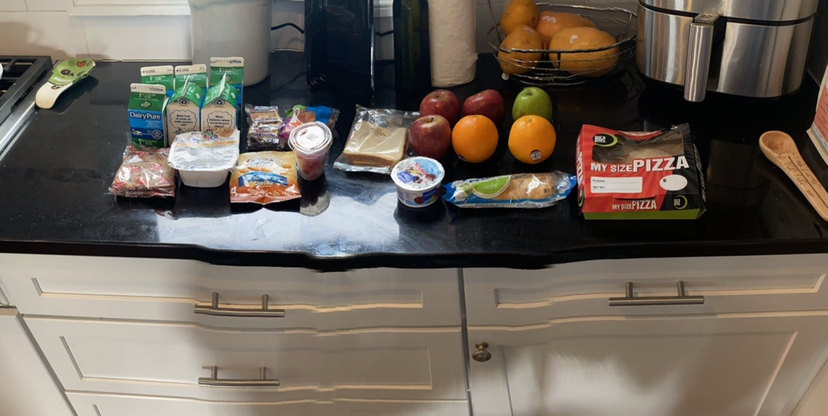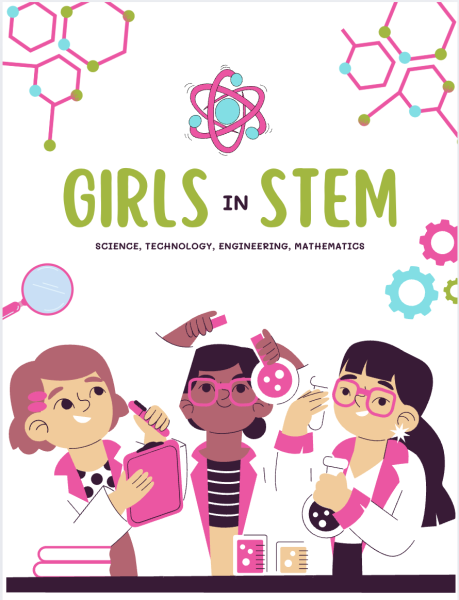Inside APS’ lunch distribution efforts
In 2018, 29.14 percent of students at the school used meal benefits, which include free and reduced meals. On March 16, when schools closed down because of COVID-19, Arlington Public Schools (APS) adapted the lunch program for distance learning.
Under the Community Eligibility Provision (CEP), APS is now serving free meals of breakfast and lunch to all children 18 and under. The CEP is a new government tool that allows schools or school districts with high levels of poverty to offer meals to all students at no charge. It eliminates the need to collect school meal applications in exchange for effectiveness.
“APS continues to provide children aged two to 18 with access to meals in a safe and sustainable way while schools are closed,” an APS press release, dated April 30, 2020, said. “Staff are wearing the proper PPE (masks and gloves) and social distancing measures are in place for staff and families. Surfaces are cleaned frequently and bags of food are placed on tables.”
The CEP is run by the Food and Nutrition Service of the government. In APS, no Student ID is necessary in 2021. The local Arlington branch of the Food and Nutrition Service operates under federal guidelines with federal funding.
“We write all the menus that are certified through the federal program, the National School Lunch Program,” director of Food and Nutrition, Amy Maclosky said. “We train all our staff, we adhere to all health and safety regulations. [The Food and Nutrition Department] hire[s] our staff to run the school cafeterias.”
On May 4th, APS changed its grab-and-go meal schedule from five to three days per a week. This schedule change was made based on feedback about convenience and health concerns. However, five days worth of food is still being served.
“We don’t know who’s picking up meals so they have some shelf staples [and] some frozen meals,” Ms. Maclosky said. “We’re packing meals, taking into consideration health and safety issues, packing everything individually . . . so there’s a lot that goes into packaging the meals.”
Community Member’s Thoughts on the System
The menus are certified through the federal National School Lunch Program, but what is on the menu this school year? According to After having consulted numerous sources, one meal could include apples, oranges, pears, crackers, packaged pie, yogurt, four milks, and a hot meal that ranges from a pizza to a sandwich.
“I don’t know how many people are picking up the lunches in terms of participation, but we’re grateful,” Elaine Kehew said, a parent who has used the Free Lunch System twice a week since it began. “We let the apples that we don’t eat as fresh apples, we make into pies and applesauce.”
Ms. Kehew began using the Free Lunch system after moving to Arlington this year, after. She workinged in Kenya for 11 years and the family returned to America this year. School lunches have helped as she and her husband continue their job search, however, her financial need alone does not drive her to pick up the school lunches.
“The kids feel more a part of the school community, especially since they don’t have any close classmate friends yet and they’re still really adjusting,” Ms. Kehew said. “If you’re eating what your friends are eating, maybe it feels different.”
Volunteer Speaks About the Outreach
Those that cannot make it to a school can rely on the seven drop off locations. These include Greenbrier Baptist Church, Lee Community Center, Upton Hill Regional Park and others.
“There’s a lot of families that are living below poverty and they don’t have cars or they don’t have money for the bus or they just maybe they just can’t get to the food source,” Christa Mansur, former President of the Parent-Teacher Association (PTA), said.
Ms. Mansur currently works for Arlington County Council of PTAs (CCPTA). In her free time she volunteers and delivers the free lunches to a family in need. Two volunteers drive the lunches to one family that signed up for the service on alternating weeks, even on holidays.
“I speak with the mom via Spanish translation, so I’d have to translate,” Ms. Mansur said. “A few times, the little kids come down and they take it from me. And so I got to meet the kids, they’re very sweet and very gracious. It’s nice to have a person behind the text.”
Need for a Food Source
Arlington Food Assistance Center (AFAC) announced on August 20 that compared to before the pandemic’s start, five months later they have seen a 45% increase in families being referred to AFAC by social workers. AFAC is funded by the Department of Human Services (DHS). The Supplemental Nutrition Assistance Program or former food stamps (SNAP), and a variety of other charity services are funded by DHS as well.
“The last seven months, six or seven months, we provided basically about $7 million to over 3,000 households so they can pay their rent,” Arlington director of DHS, Anita Friedman said. “In a normal year, we maybe spend about a million dollars.”
New attention is being given to the issues that DHS covers, according to Ms. Friedman. In fact, a Food Security Coordinator, Manager Mark Schwartz, was just hired within DHS at the behest of Arlington County to address food insecurity coordination. Several fundraising efforts have been conducted to go to DHS’ issues.
“We just had something called a Secret Santa program that we ran out of our department, and people get $25 gift cards, or cards,” Ms. Friedman said. “In the past years we’ve raised like $40,000 worth of gift cards. This year it was over $100[000] raised.”
The Impact
The number of schools enrolled in the program have grown from five to 22, all based on income, determined by school district and individual school data. As of February 4th, the school system said it has served 358,512 meals to students since schools closed.
“Families who rely on food stamps and other means that have been getting meals at school will find themselves without during the school year if they weren’t coming to get meals,” Ms. Maclosky said. “Through the year, we administer the free and reduced lunch Meals Program.”
The school lunch system began at about 300 meals per day, right after school closed and now serves about 6,000 a day due to increasing need in Arlington and increasing coverage, according to Macloskyher. As this is a program funded by tax dollars, the Food and Nutrition Program would like to thank all in the community for the support.
“I think it’s positive in that it remains [because] it keeps normalcy for students, students who may not need the meals,” Ms. Maclosky said. “[Students] just get out during the day and have a good walk or bike ride to the meal sites, have some outside time and go home and eat their lunch.”












